Greek Mythology Muse of Lyric Poetry and Music
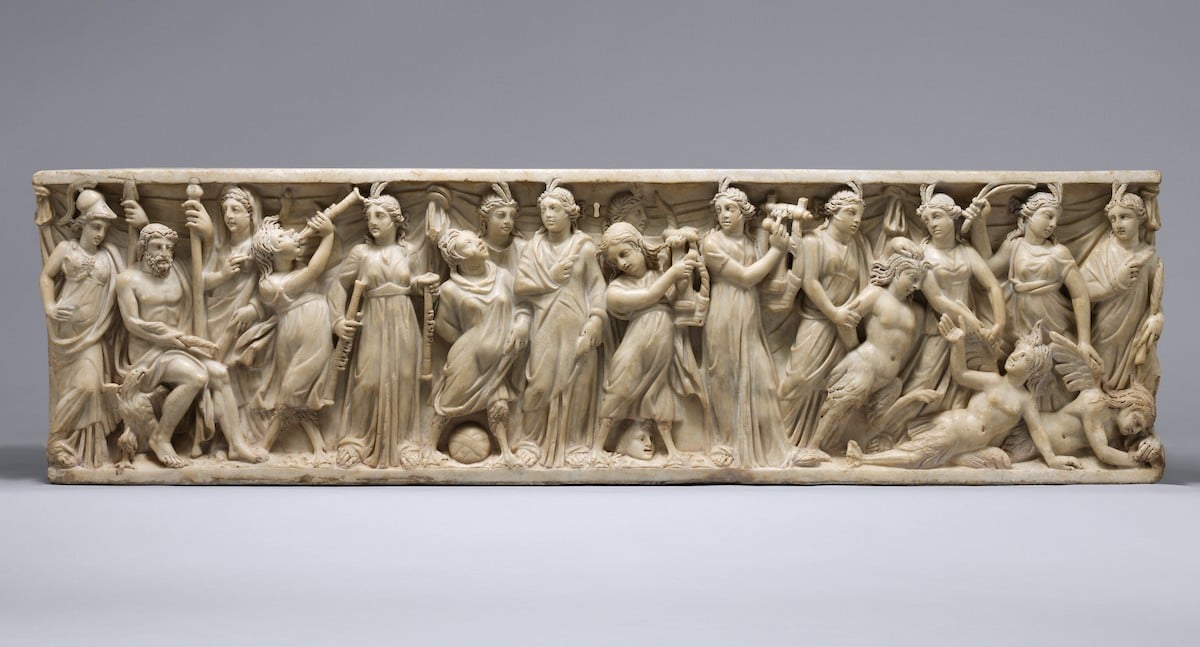
According to ancient Greek mythology, the Muses are the sources of inspiration for all of the arts and of knowledge. The daughters of Zeus and Mnemosine, they were the romantic companions of Apollo's entourage of gods.
The Muses began their lives as nymphs that manifested as whispers in the ears of those that invoked them. The ancient writer Hesiod called upon them across the world as the nine muses: Calliope, Clio, Erato, Euterpe, Melpomene, Polyhymnia, Thalia, Terpsichore and Urania.
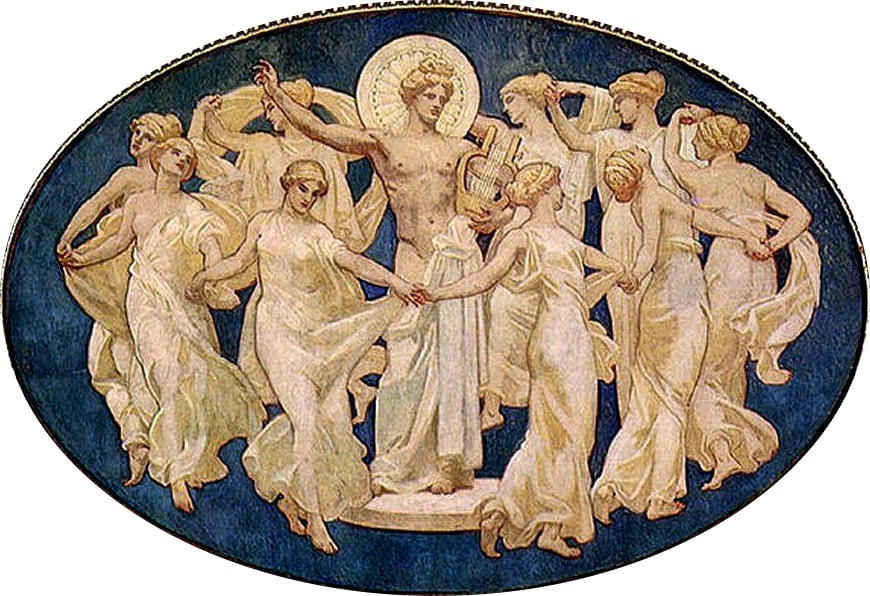
The Muses were integral to the artistic development of ancient Greece. The poets attempted to summon the Muses, who they believed would respond by giving them inspiration for their work. The ancient Greeks worshiped the Muses until Christianity became the dominant religion in Europe.

Each of the Muses is associated with her own unique form of art and knowledge.
Calliope: "The one with the beautiful voice"
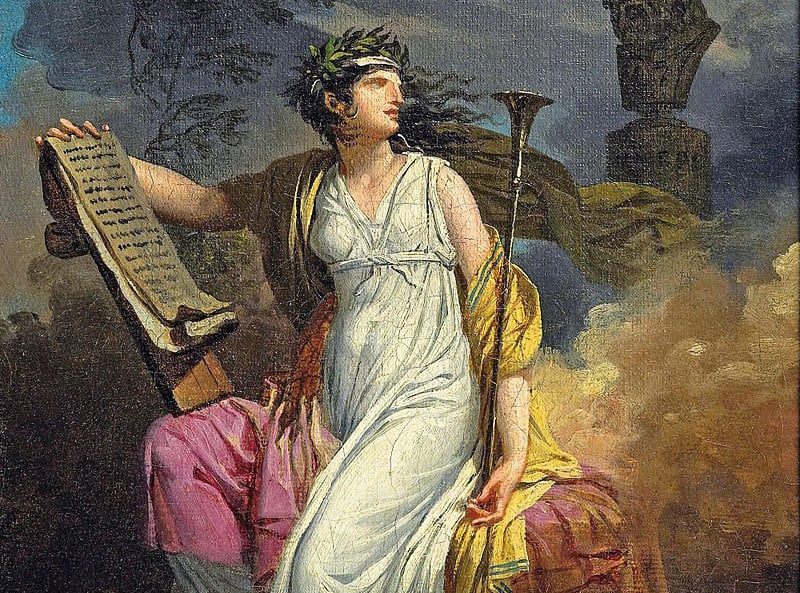
Calliope is the oldest of the Muses and the Muse of epic poetry and eloquence. The writer Hesiod emphasized Calliope's high status amongst the Muses, noting that she "walked amongst kings." She married Eagro and was the mother of Orpheus and Linus.
She is nicknamed "The one with the beautiful voice" in Greek mythology since she taught the art of singing to Achilles.
Calliope is represented as a beautiful young woman with a majestic air, wearing a golden crown and adorning herself with garlands while carrying a trumpet in one hand and a scroll of parchment in the other.
Clio, "to praise or sing," was the Muse of historians
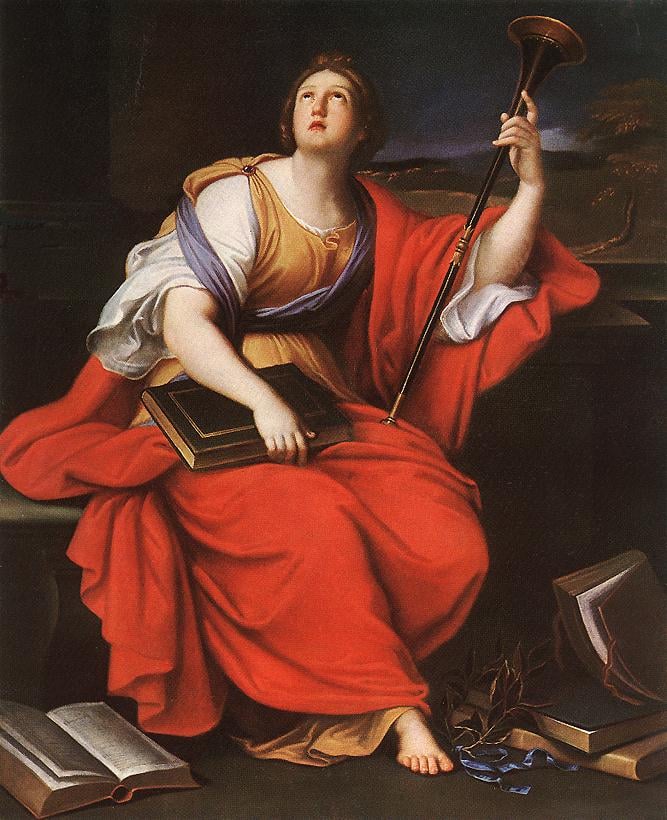
Clio is the muse of history. She carries a trumpet in her left hand and a book written by Thucydides in her right, and is frequently associated with a globe. Her representation symbolizes history, embracing all places and times.
Clio is also considered the creator of the guitar.
Erato, the Muse of romance and romantic poetry
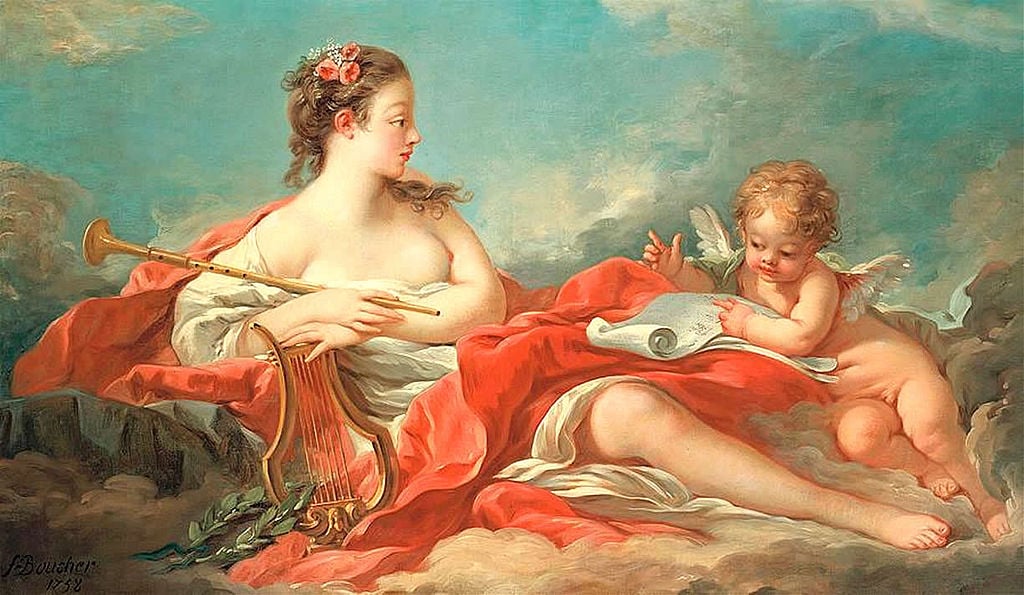
According to Greek mythology, Erato is the inspirational muse of poetry, especially romantic poetry. In ancient times she was represented with a laurel wreath but since the Renaissance she has been depicted in art with a crown adorned with myrtle and roses.
In her hands she carries a zither, a small instrument similar to the lyre, invented by Hermes.
She is also depicted with two turtle doves pecking at her feet, and sometimes she is accompanied by the god Eros.
Euterpe, another Muse for Music Creators
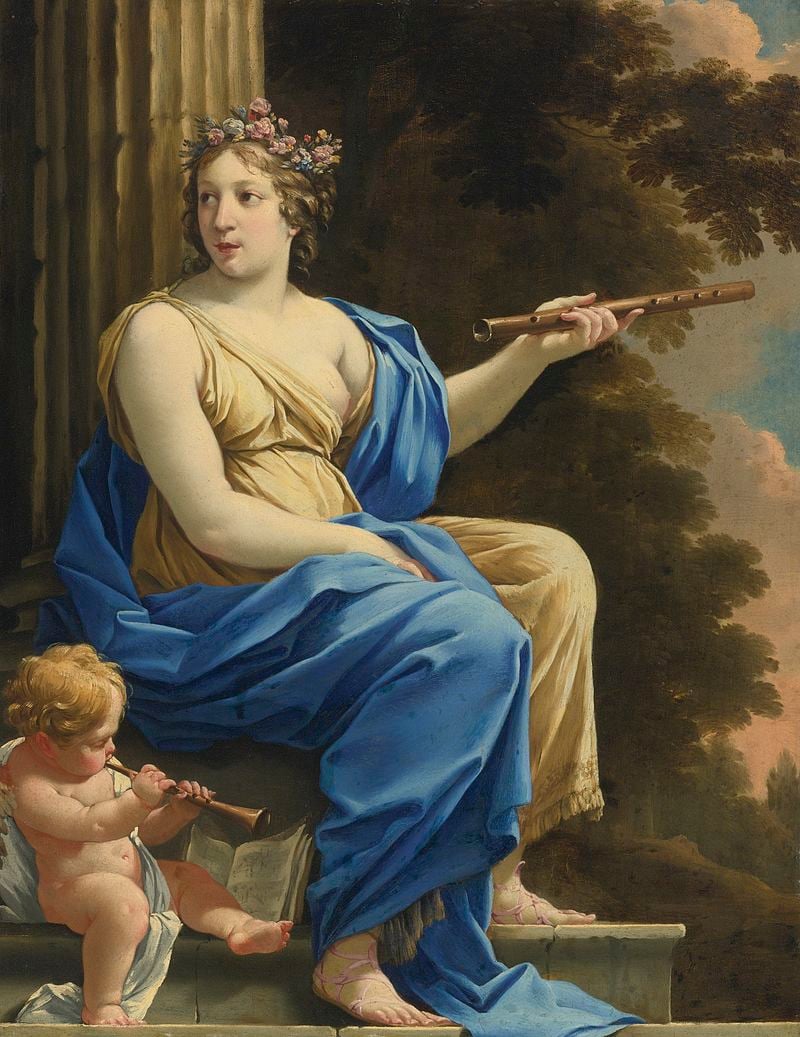
Also known as "the very pleasant one" and "the one with a pleasant genius," Euterpe is the Muse of music, specifically the flute. She is typically represented with a crown of flowers in her hair and carrying a double-piccolo in her hands.
In other depctions she is also seen with instruments like the violin, the guitar, and drums.
She is also the mother of Reso, a warrior who died at the hands of Diomedes in Troy, according to Homer's Iliad.
Melpomene, whose name means "The one who is melodious"

Melpomene is known as one of the two Muses of the theater. At first she was the Muse of singing and musical harmony, but over time she became known as the Muse of tragedy.
Crowned with a diadem, Melpomene is shown wearing sumptuous dresses as well as the mask of tragedy that she wields in her hand.
According to legend, Melpomene is the mother of the Mermaids. It is said that she had everything a woman could desire: beauty, money, and men — but despite this, she did not have happiness. This embodies the true nature of tragedy: having everything can never satisfy your innermost desires.
Polyhymnia, "The one of many songs"

The Muse of lyric poetry, Polyhymnia is credited with the creation of the lyre, and harmony — as well as agriculture. She is also known as the Muse of dance, geometry and rhetoric.
Polyhymnia transforms faith into music by imbuing hymns with an ethereal tranquility.
She is usually represented dressed in white and leaning her elbow on a pedestal or a rock, gazing out introspectively. Sometimes she is represented with a chain in her hands, demonstrating the power she exercises over eloquence.
Thalia, "The joyous, the flourishing" Muse
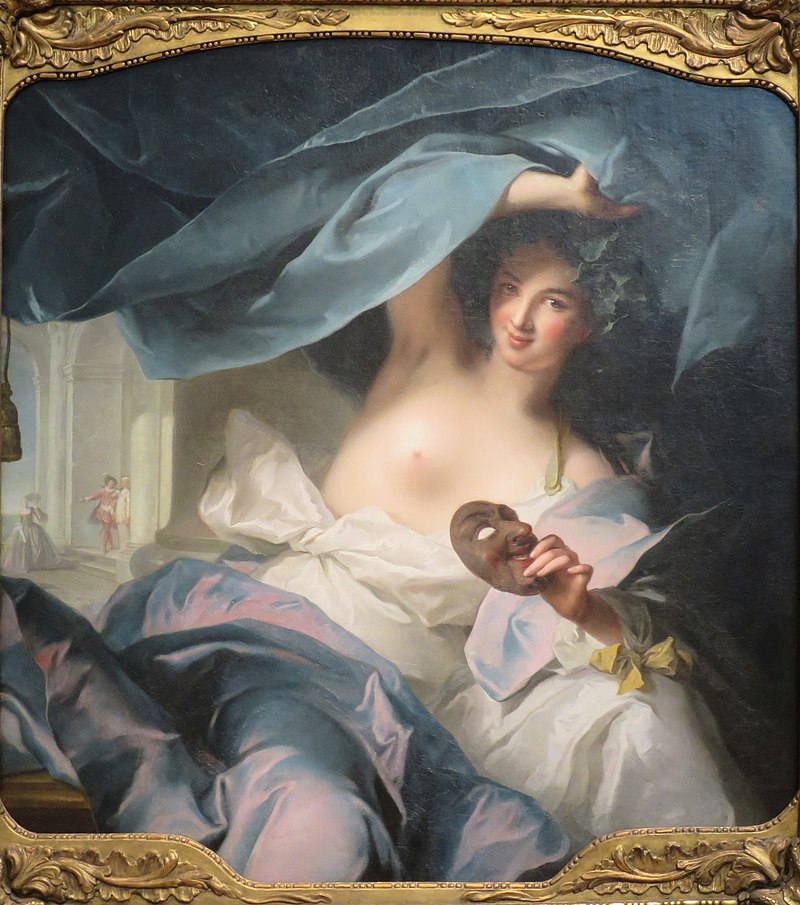
Thalia is one of the two Muses of the theater, the one who inspires comedy and poetry that evokes the natural world. Thalia is represented as a laughing, cheerful young woman with a mocking expression; her main attribute is the comic mask she carries. Her name means "flourishing," as the praises contained in her songs were found to sound new even as they aged over time.
Terpsichore, whose name means "delight in dancing"
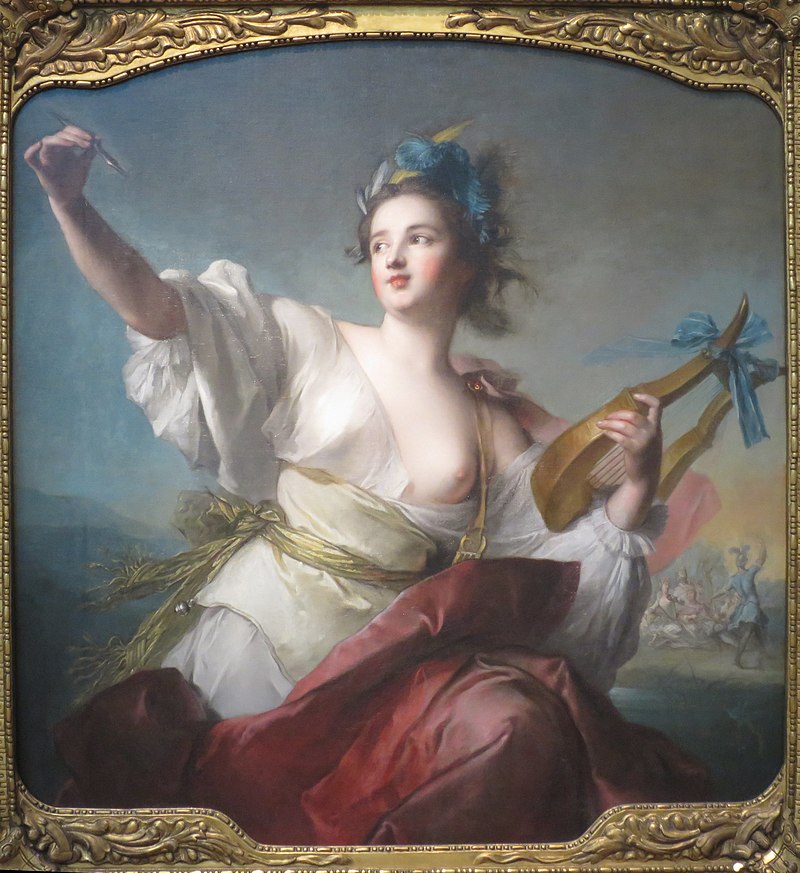
Terpsichore is associated with light poetry and dance. She is depicted as a slender young woman with a jovial air and a light attitude.
Her head is adorned with a crown of flowers and she plays a lyre. She is known to be the mother of the Sirens, who seduce sailors with their songs in Homer's Odyssey.
Urania, the "Heavenly" Muse

Urania, the Muse of astronomy and astrology, is the youngest of the nine. She is represented in a blue dress with a globe near her, on which she measures positions with a compass.
She wears a crown of stars and has a slew of mathematical instruments at her feet, which is why many consider her the Muse of mathematics as well.
Her name has inspired many observatories and astronomy groups, and the planet Uranus is named after her as well as the Greek god Uranus.
Which of the Muses would you like to invoke to help you in your daily life?
Greek Mythology Muse of Lyric Poetry and Music
Source: https://greekreporter.com/2021/08/15/muses-of-greek-mythology/